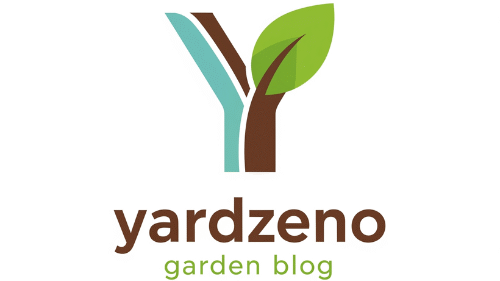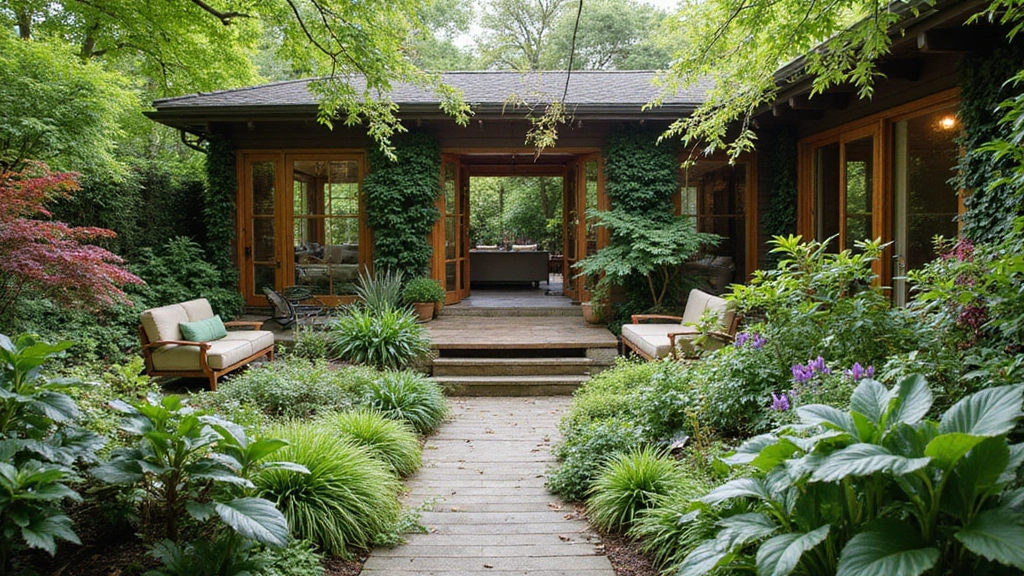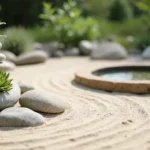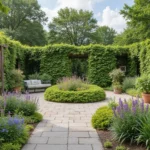Transforming a spacious garden into a verdant oasis is more than just planting a few flowers. It’s about designing an outdoor sanctuary that harmonizes with the environment while providing you with a space for relaxation and enjoyment.
From lush landscapes to sustainable practices, these 30 large garden ideas will inspire you to create a personal paradise. Each concept is designed to maximize your outdoor living potential and enhance the beauty of your surroundings. Let’s bring your vision to life with these sustainable landscaping tips and creative garden design inspiration!
1. Eco-Friendly Vegetable Garden

Embrace sustainability with an eco-friendly vegetable garden that not only nourishes your body but also respects the planet. Start by selecting heirloom seeds and organic soil. Raised beds can be a stylish and efficient option, providing excellent drainage and soil quality.
Consider incorporating companion planting to maximize space and yields, such as tomatoes with basil or carrots with onions. Adding a rainwater collection system can also help reduce water usage. Protect your plants with natural pest deterrents like neem oil instead of harmful chemicals.
– Benefits: Fresh produce at your doorstep, reduced grocery bills, and positive environmental impact.
– Tips: Rotate your crops yearly to maintain soil health.
– Tricks: Use mulch to conserve moisture and suppress weeds.
This organic oasis will become an inviting space where you can connect with nature and enjoy wholesome food directly from your garden.
2. Native Plant Landscaping
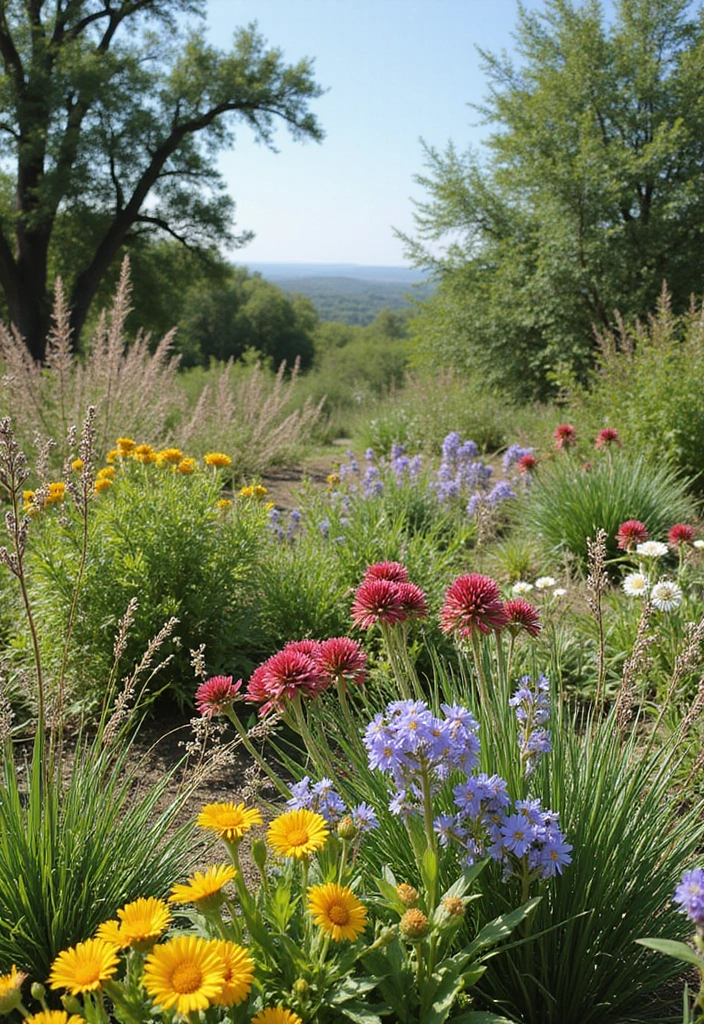
Invest in native plants that thrive in your area, requiring less maintenance and fewer resources. These plants are adapted to local climates and ecosystems, providing essential habitats for wildlife.
Design your garden with a diverse mix of perennials, shrubs, and grasses to create a layered effect. This not only adds visual interest but also helps with biodiversity. Consider creating a wildflower meadow or an edible landscape with berry bushes and fruit trees.
– Advantages: Low water usage, reduced pest problems, and timeless beauty.
– Suggestions: Consult a local nursery for the best native options.
– Tricks: Group plants with similar water needs together to optimize irrigation.
This approach fosters a sense of belonging in your garden while promoting environmental stewardship.
3. Sustainable Fire Pit Area

Create a cozy gathering space with a sustainably designed fire pit area. Utilize recycled or locally sourced materials to build the pit and seating. This can include stone from your property or reclaimed wood for benches.
Surround the fire pit with native plants for a natural feel, and incorporate solar lights to add ambiance for evening gatherings. Consider seating options like log benches or colorful outdoor cushions for comfort.
– Benefits: A perfect spot for entertaining family and friends.
– Tips: Keep safety in mind; use non-flammable materials.
– Tricks: Find a secluded area to minimize smoke exposure.
This space will be the heart of your garden, fostering connections and creating lasting memories under the stars.
4. Vertical Gardens
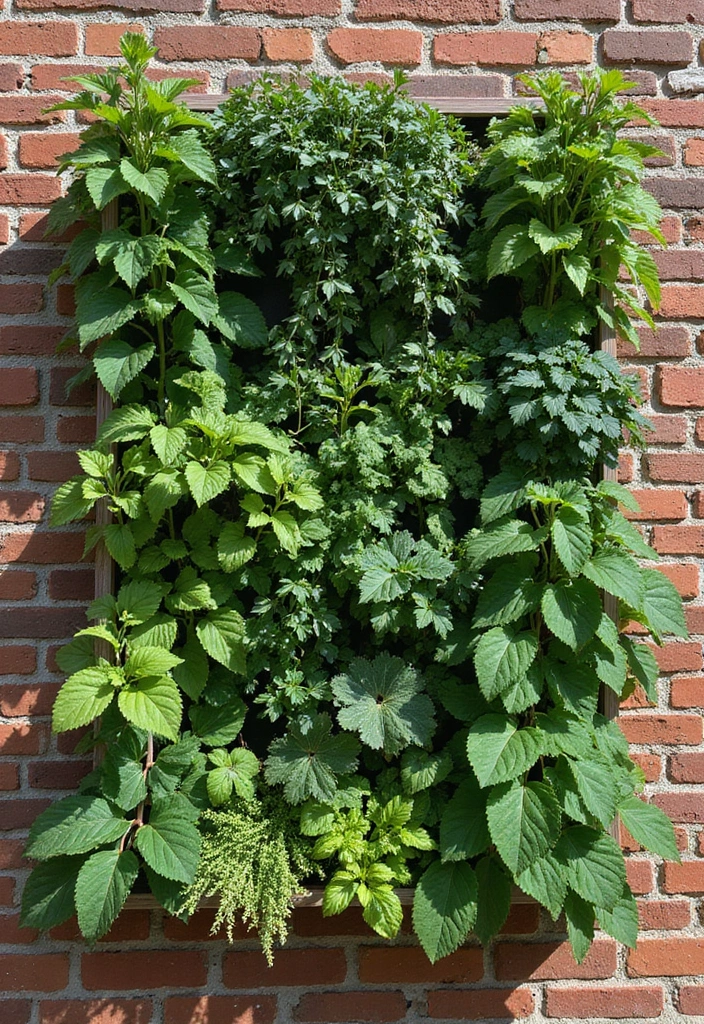
When space is at a premium, vertical gardens rise to the occasion! These striking features can transform bare walls into stunning living canvases. Use trellises, wall planters, or hanging pots to create a lush vertical display.
Select climbing plants like clematis or jasmine for fragrant blooms, or grow herbs such as mint and thyme for your kitchen. Vertical gardens can also provide shade and reduce heat in outdoor spaces.
– Advantages: Space-saving, visually appealing, and improves air quality.
– Suggestions: Install a drip irrigation system for easy watering.
– Tricks: Opt for hardy plants that can withstand varying weather conditions.
This innovative solution can amplify the beauty of your garden while showcasing your personal style.
5. Water Features with Sustainability in Mind
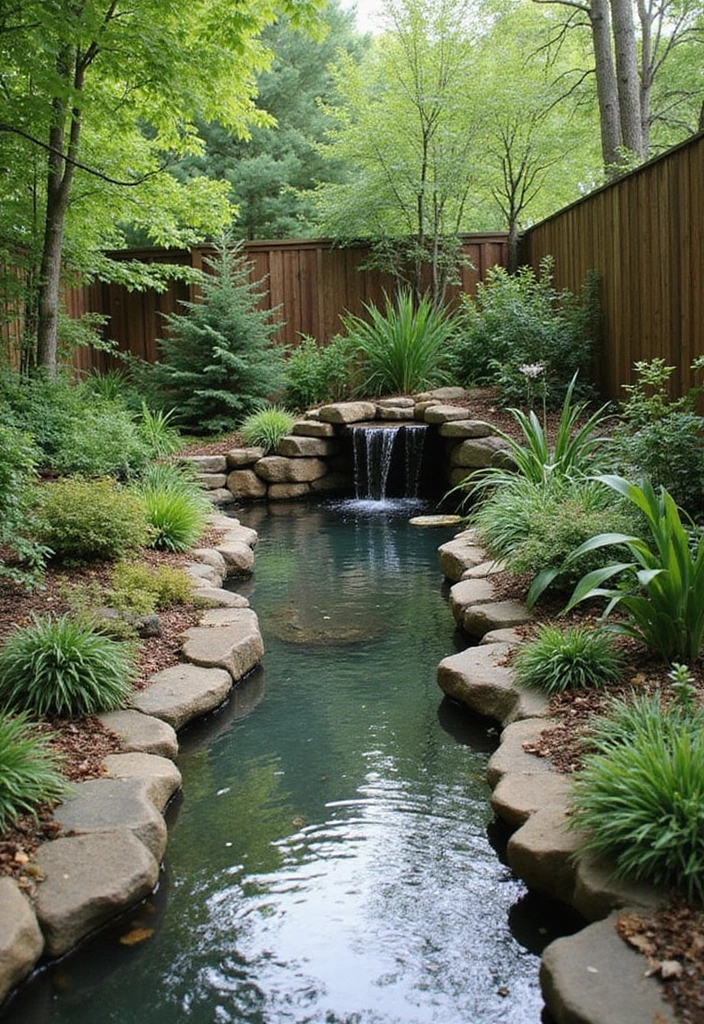
Incorporating a water feature, like a pond or fountain, can elevate your garden into a serene retreat. Choose eco-friendly designs that utilize recycled materials or are powered by solar energy. Ponds can host fish and aquatic plants, creating a wildlife haven.
When designing, consider adding native wetland plants to enhance the ecosystem. This will not only beautify the space but also filter water naturally. Ensure your water source is sustainable, for instance, by using rainwater collection.
– Benefits: Adds tranquility, attracts wildlife, and improves garden aesthetics.
– Suggestions: Maintain water quality through natural filtration.
– Tricks: Incorporate rocks to create a natural look.
This calming addition will transform your outdoor space into a paradise filled with birds and butterflies.
6. Outdoor Kitchen and Dining Areas
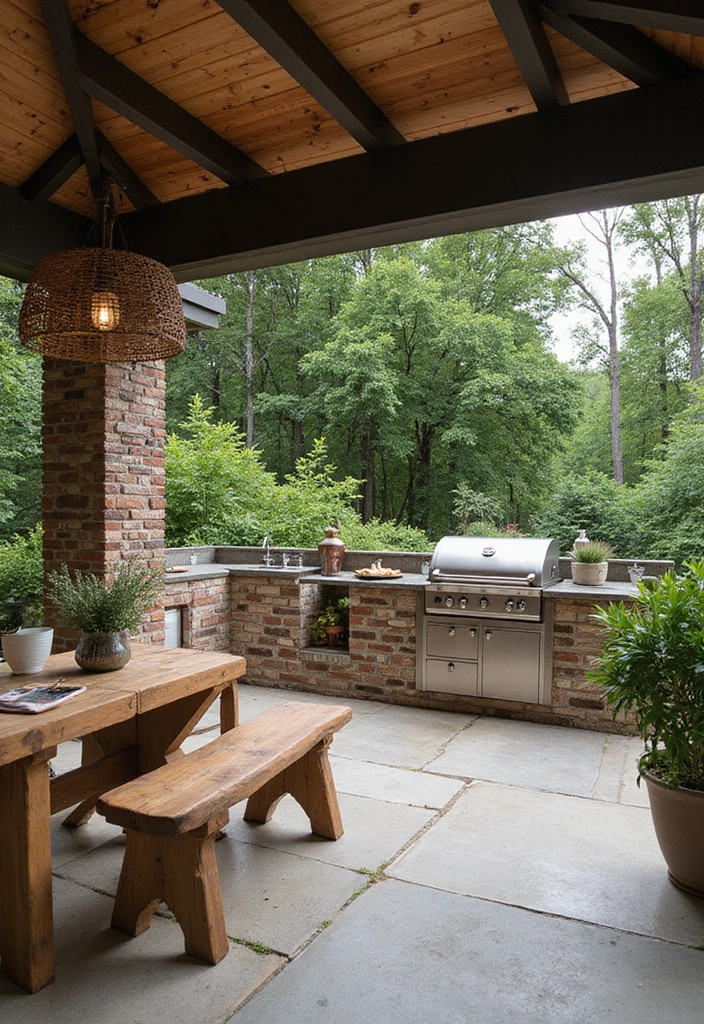
Enhance your outdoor living experience with a functional and stylish outdoor kitchen and dining area. Use sustainable materials like reclaimed wood for countertops and eco-friendly appliances that reduce energy consumption.
Design a layout that seamlessly integrates grilling, prep space, and seating. Add a pergola for shade and twinkling string lights for ambiance in the evenings. Consider planting herbs nearby for fresh seasoning right from your garden.
– Benefits: Expands your living space, ideal for entertaining.
– Suggestions: Invest in durable outdoor furniture to withstand the elements.
– Tricks: Keep the design cohesive with your garden aesthetic.
This versatile area will turn family meals into joyful outdoor experiences, offering both functionality and beauty.
7. Edible Landscaping
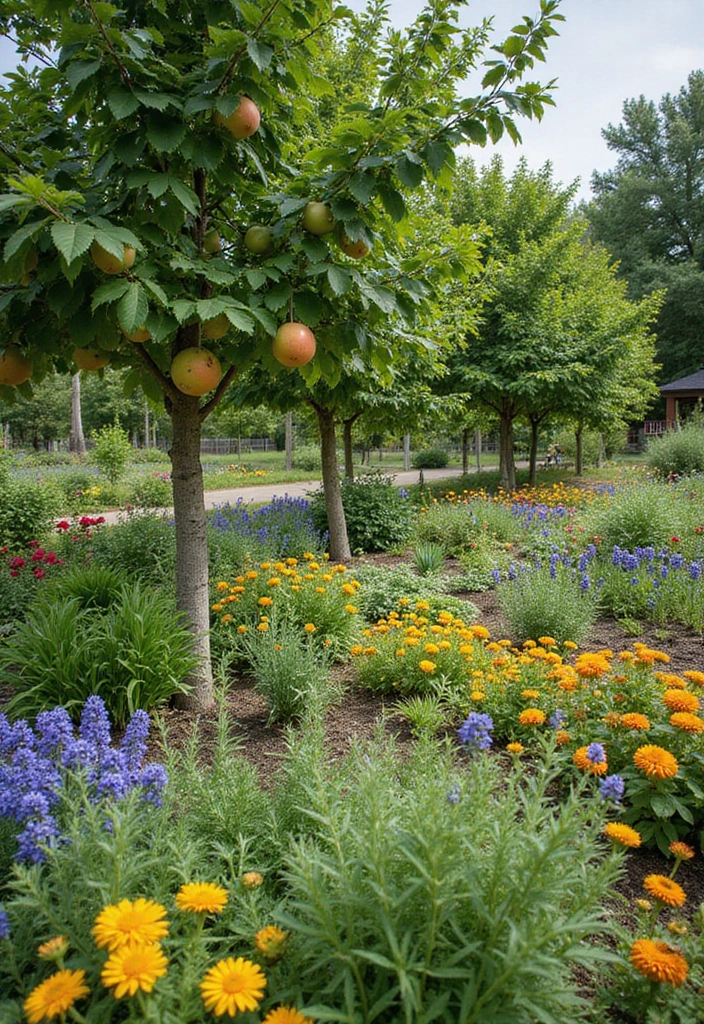
Why not make your garden both beautiful and functional? Edible landscaping integrates fruits, vegetables, and herbs into ornamental designs. Plant berry bushes along pathways or intersperse herbs in flower beds for a delightful combination.
Consider creating an orchard or a compact fruit tree grove that offers shade and seasonal beauty. Raised beds can be arranged for easy access and aesthetic appeal. This provides a harvest that adds flavor and nutrition to your meals.
– Advantages: Attractive and productive spaces, encourages healthy eating.
– Suggestions: Use dwarf varieties for smaller spaces.
– Tricks: Plant perennials for year-round yields.
By mixing beauty with bounty, you create a garden that delights the senses.
8. Wildlife-Friendly Garden
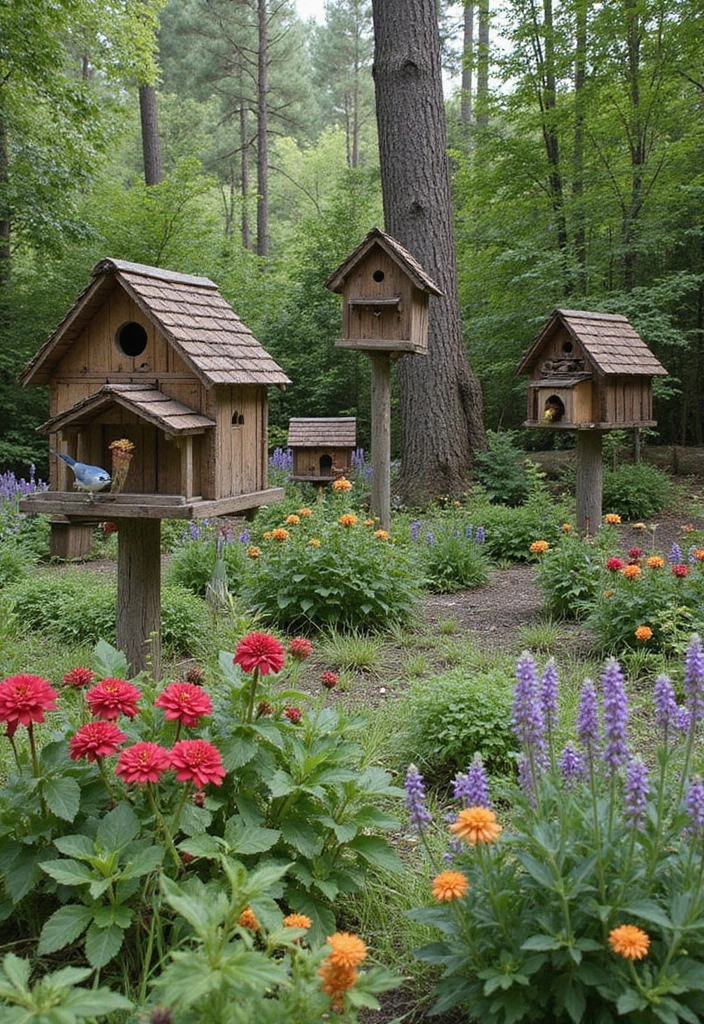
Create a haven for wildlife by designing a garden that attracts beneficial creatures. Incorporate birdhouses, butterfly gardens, and insect hotels. Native plants provide food and shelter, while a small water source can quench their thirst.
Use organic gardening practices to ensure your new guests thrive. Avoid pesticides that disrupt ecosystems and encourage natural predators like ladybugs. This approach fosters a balance in your garden that supports biodiversity.
– Benefits: Contributes to the ecosystem and provides educational opportunities.
– Suggestions: Research local wildlife needs to tailor your garden.
– Tricks: Create layered plantings to provide different habitats.
This garden initiative turns your large yard into a sanctuary brimming with life.
9. Cozy Nooks and Reading Areas
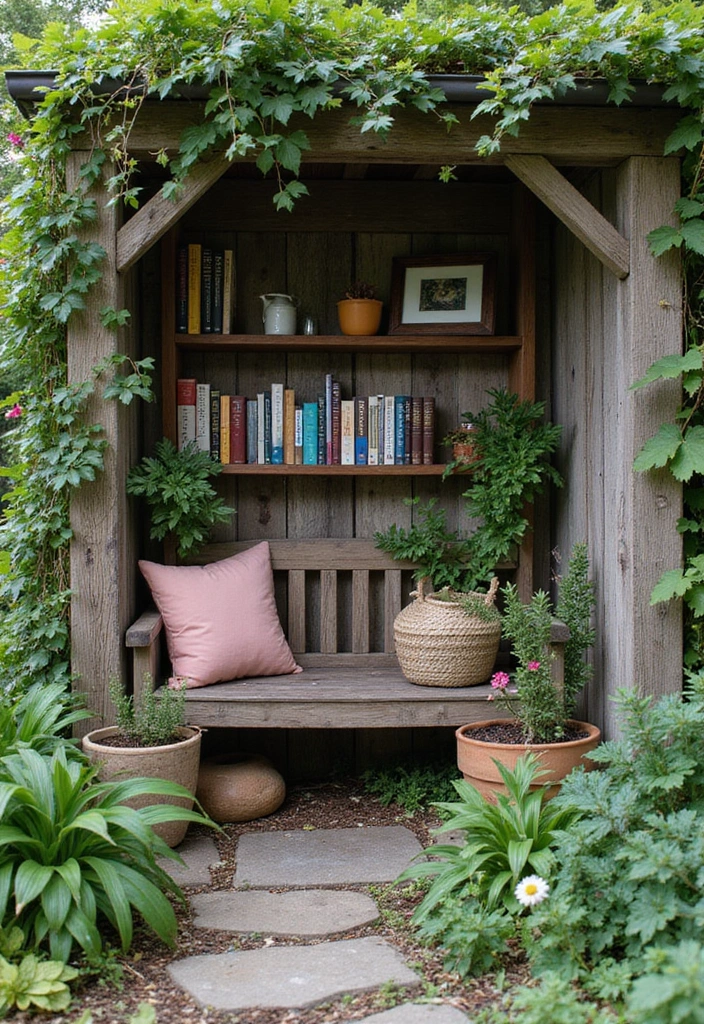
Transform parts of your garden into cozy nooks for relaxation and reading. Use natural materials like stones or reclaimed wood to create benches or swings nestled among flowers and shrubs. Add cushions for comfort and throw blankets for cooler evenings.
Incorporate a small bookshelf or a side table for drinks. Plant fragrant flowers nearby to create a sensory experience. Consider integrating a shade tree to provide coolness on sunny days.
– Benefits: Encourages outdoor relaxation and connection with nature.
– Suggestions: Plant flowering vines for added privacy.
– Tricks: Position your nook for scenic views in your garden.
These inviting corners will beckon you to take a break, connect with a good book, and enjoy the serene surroundings.
10. Sustainable Lawn Alternatives
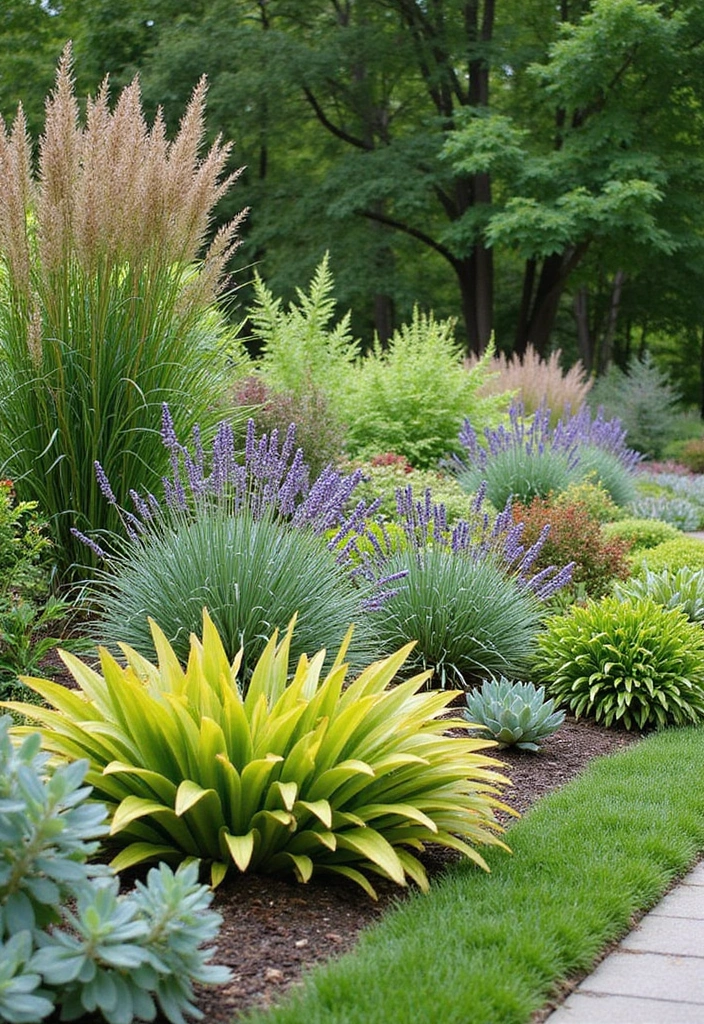
Rethink traditional lawns with sustainable alternatives that require less maintenance. Ground covers like clover or thyme can create lush, green carpets without the need for mowing or excessive watering.
Consider incorporating ornamental grasses or native wildflowers that provide beauty and habitat. These options reduce water consumption and support pollinators while still offering a pleasant appearance.
– Benefits: Eco-friendly, low maintenance, and cost-effective.
– Suggestions: Research which alternatives thrive in your specific climate.
– Tricks: Use a mix of plants for a varied landscape.
This innovative approach to lawn design can help create a vibrant and sustainable outdoor space.
11. Herb Spiral Design
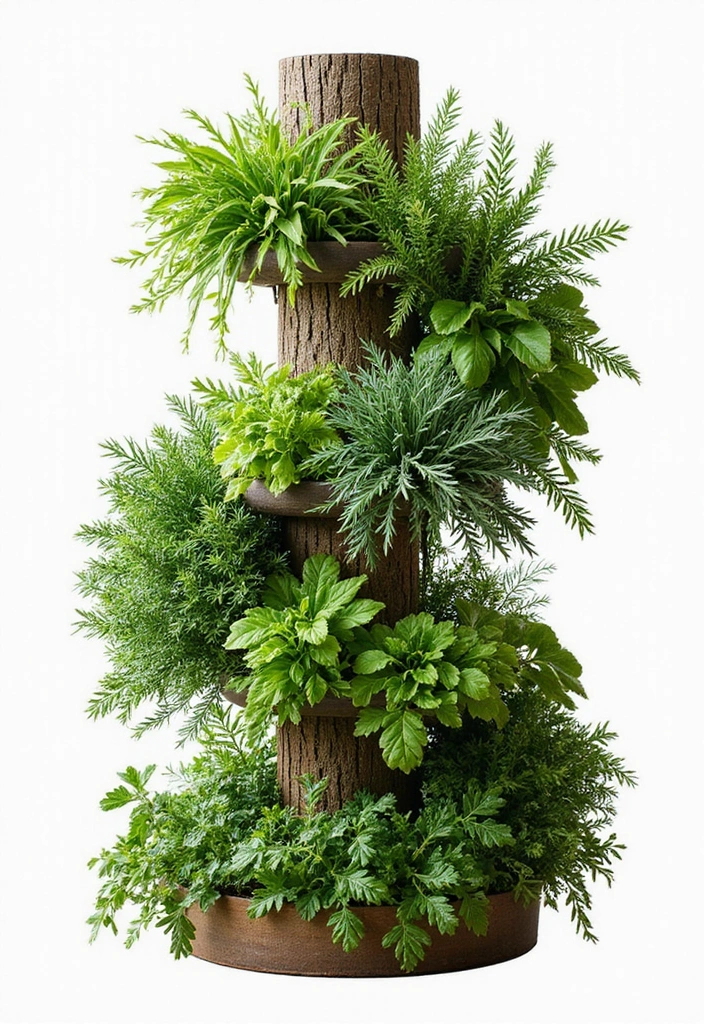
An herb spiral is a vertical garden design that maximizes space while providing optimal growing conditions for various herbs. This spiral structure creates microclimates, allowing you to grow plants that require different moisture levels side by side.
Position your spiral in a sunny spot, and fill it with culinary herbs like rosemary, basil, and mint. Use stone or wood to build the spiral, ensuring good drainage. This design also encourages airflow, reducing the risk of pests.
– Benefits: Space-efficient and visually striking.
– Suggestions: Incorporate a drip irrigation system for easy watering.
– Tricks: Choose herbs that flourish in your climate for maximum yield.
This creative design not only looks beautiful but also provides a continuous supply of fresh herbs for your kitchen.
12. Green Roofs and Living Walls

Turn your garden structures into living sculptures with green roofs or living walls. These features provide insulation, absorb rainwater, and enhance air quality, making them fantastic sustainable choices.
For roofs, select low-maintenance plants like sedums that thrive in varied conditions. For walls, create a stunning visual with climbing plants or wall gardens filled with herbs or flowers. Integration of native species will help support local wildlife.
– Benefits: Unique aesthetics and environmental benefits.
– Suggestions: Ensure proper structural support and drainage.
– Tricks: Use lightweight growing mediums for vertical gardens.
These living features can transform your garden while contributing positively to the environment.
Transform your large garden into a living masterpiece! Green roofs and living walls not only add stunning aesthetics but also support local wildlife and improve air quality. Let nature inspire your creativity!
13. Pathways with Purpose
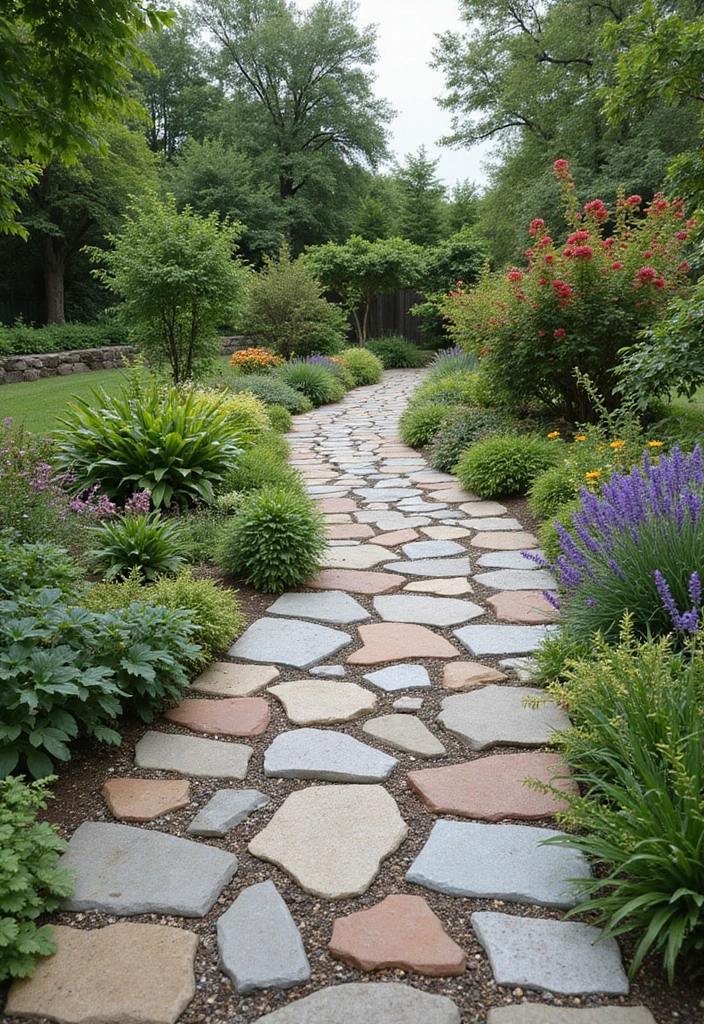
Create pathways that guide visitors through your garden while providing functional beauty. Use recycled materials like bricks or stones for a rustic look. Incorporate plants along the edges to soften the pathway and enhance visual interest.
For added sustainability, consider permeable paving options that allow rainwater to seep through, reducing runoff. Planting native ground cover plants alongside pathways can also add color and attract pollinators.
– Benefits: Practical navigation and enhanced aesthetics.
– Suggestions: Design paths that lead to key areas, like seating or water features.
– Tricks: Vary the width of pathways for a dynamic effect.
These purposeful pathways will help you navigate your garden while showcasing its beauty.
14. Pergolas and Shade Structures
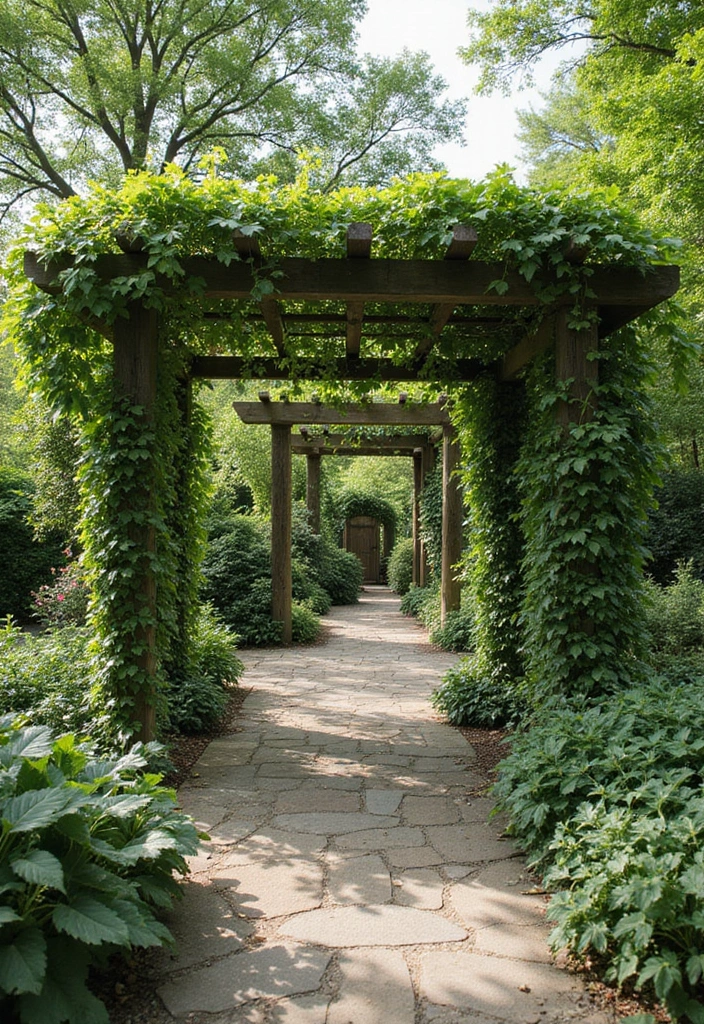
Enhance your outdoor space with a stylish pergola or shade structure that offers both aesthetics and functionality. These structures can be made from sustainable materials such as reclaimed wood or bamboo.
Incorporate climbing plants like wisteria or grapevines to add greenery and shade. Consider adding curtains or solar screens for privacy and protection from the sun. This area can serve as a cozy spot for dining or relaxing with friends.
– Benefits: Offers shade and enhances outdoor living.
– Suggestions: Choose a design that complements your garden theme.
– Tricks: Ensure proper anchoring to withstand weather conditions.
A well-placed pergola will create an elegant focal point in your large garden while providing a comfortable retreat.
15. Sensory Gardens
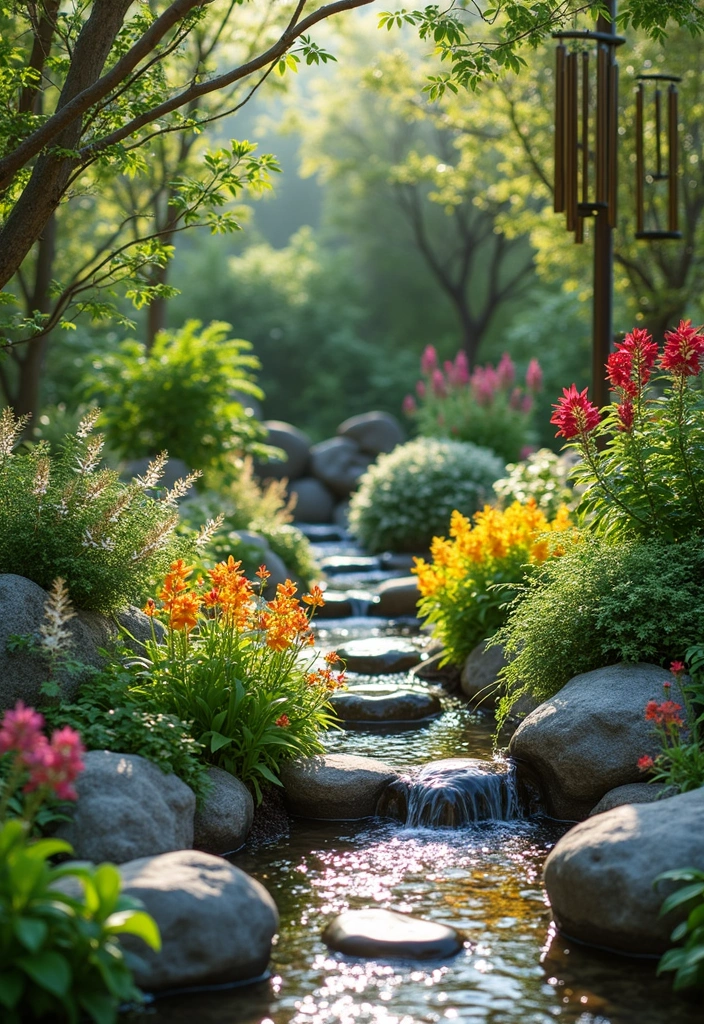
Engage all five senses by creating a sensory garden that delights visitors. Choose plants with varied textures, colors, and scents. Incorporate elements that appeal to touch, like soft lamb’s ear or fragrant lavender.
Add features such as wind chimes for sound, and consider including a small water feature for a peaceful ambiance. Incorporating edible plants also adds taste to the experience. This is especially great for children and those with sensory sensitivities.
– Benefits: Provides a rich, immersive experience for visitors.
– Suggestions: Create labeled sections for each sense.
– Tricks: Use curved pathways to encourage exploration.
This engaging garden design will provide joy and connection with nature for everyone who visits.
16. Natural Pools
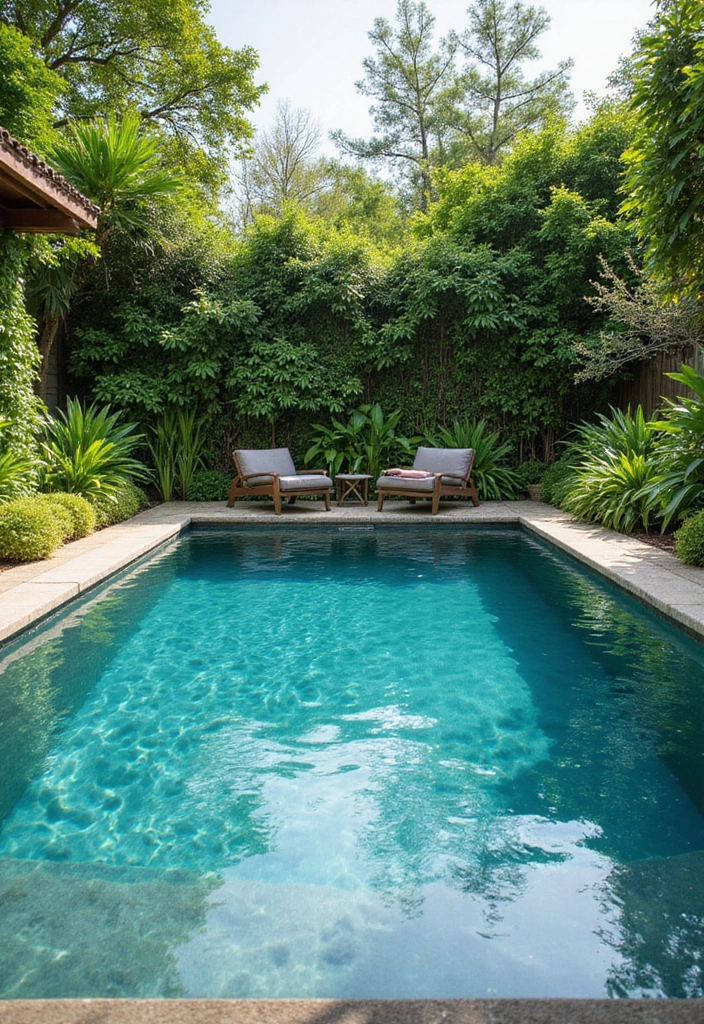
Consider a natural swimming pool that integrates seamlessly with your garden. These pools utilize plants and biological filters to keep water clean, offering a sustainable and eco-friendly alternative to chlorinated pools. They can be as beautiful as a traditional pool, encouraging biodiversity.
Surround the pool with native plants that enhance the natural aesthetic. The design can include a shallow area for lounging and deeper spots for swimming.
– Benefits: Chemical-free water, visually stunning, and promotes wildlife.
– Suggestions: Choose plants that thrive in aquatic environments.
– Tricks: Incorporate rocks for a natural look and habitat.
This eco-friendly choice creates a serene retreat right in your backyard, perfect for relaxing and cooling off in the summer.
17. Garden Art Installations

Boost your garden’s personality with vibrant art installations. Utilize recycled or upcycled materials to create sculptures or decorative features that reflect your style. Incorporate local artists’ works to support the community and bring unique pieces to your space.
Consider functional art, like benches or trellises that are both beautiful and practical. Place art strategically within the garden to create focal points that draw the eye.
– Benefits: Personalizes your space and enhances visual interest.
– Suggestions: Consider the scale of your artwork in relation to the garden size.
– Tricks: Use a mix of textures and colors for a dynamic effect.
These creative elements will turn your large garden into a vibrant gallery that inspires and delights.
Art is not just decoration; it’s the heartbeat of your garden. Transform recycled materials into stunning pieces that tell your story and connect with the community!
18. Outdoor Living Rooms
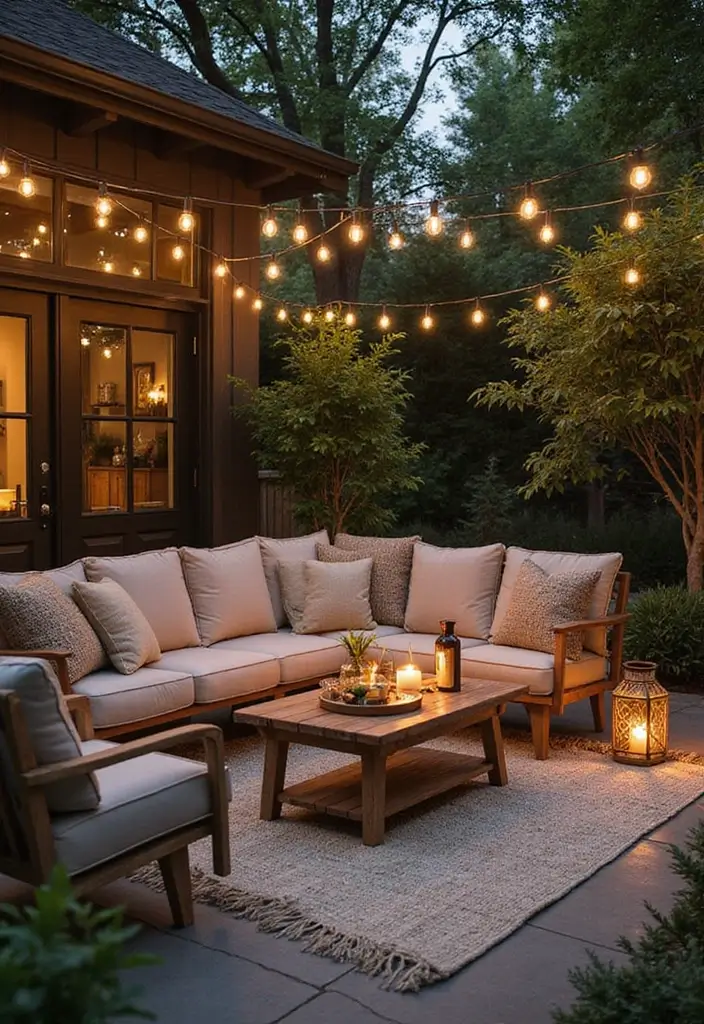
Design an outdoor living room that brings the comfort of indoors to your garden. Use weather-resistant furniture, soft textiles, and cozy lighting to create a welcoming space for relaxing or entertaining.
Incorporate plants to provide a natural backdrop and increase privacy. Consider adding a fire pit or a fireplace for warmth and ambiance, allowing you to enjoy the space year-round. Incorporating outdoor rugs can also enhance comfort and style.
– Benefits: Expands your living space and enhances outdoor enjoyment.
– Suggestions: Choose furniture that complements your garden’s aesthetic.
– Tricks: Layer lighting for evening ambiance.
This inviting outdoor room will become your favorite retreat, perfect for gatherings or quiet evenings under the stars.
19. Meditation Gardens

Create a peaceful meditation garden designed for reflection and relaxation. Incorporate elements like calming water features, soft seating, and fragrant plants to engage the senses. Pathways lined with smooth stones can guide visitors to a serene sitting area.
Use evergreen plants for year-round tranquility, and consider adding wind sculptures or chimes for gentle sounds. A small pagoda or gazebo can also provide a focal point and shelter.
– Benefits: Provides a quiet space for mindfulness and rejuvenation.
– Suggestions: Choose calming colors and textures.
– Tricks: Create secluded spots to enhance privacy.
This tranquil space will encourage you to take a step back from the rush of life and find peace in nature.
In a world full of noise, a meditation garden is your refuge. Transform your large garden ideas into a tranquil haven that invites reflection and peace, one fragrant plant at a time.
20. Outdoor Game Areas

Transform a portion of your large garden into an outdoor gaming area that invites fun and activity. Use eco-friendly materials to build structures for games like cornhole, giant Jenga, or a small putting green.
Consider different zones for various activities, with comfortable seating arrangements nearby for spectators. Ensure that the area remains vibrant by integrating it with native plants or raised beds around the perimeter.
– Benefits: Encourages family bonding and outdoor activity.
– Suggestions: Choose games suitable for all ages.
– Tricks: Provide shaded areas for breaks to combat the heat.
This playful addition will enhance your garden’s appeal, making it the go-to spot for family gatherings and friend get-togethers.
Turn your large garden into a playground of laughter and memories! Outdoor game areas spark joy, boost family bonding, and keep everyone active—what’s not to love about that?
21. Community Gardening Spaces
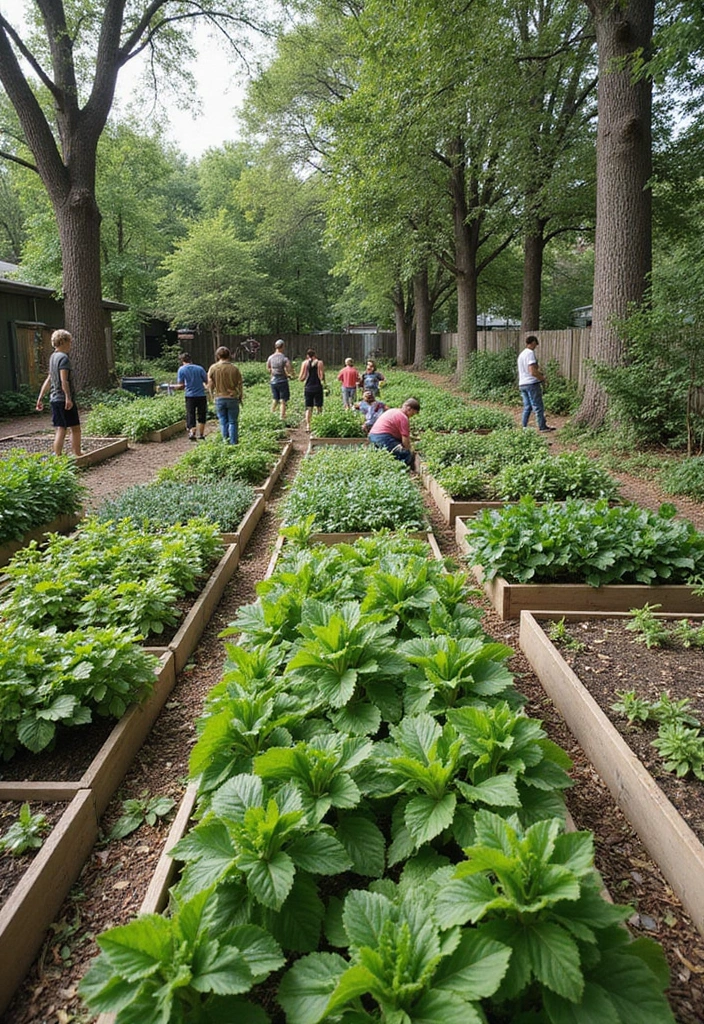
If you have a large garden, consider allocating a section for community gardening. This can foster friendships and cooperation among neighbors while promoting sustainable practices.
Incorporate raised beds and designated areas for different types of plants. Provide tools and resources for community members, along with a shared compost area for waste management. Workshops on sustainable gardening practices can also enhance community engagement.
– Benefits: Strengthens community bonds and promotes biodiversity.
– Suggestions: Create a committee to manage the space.
– Tricks: Host seasonal potlucks to celebrate the harvest.
This initiative will turn your garden into a hub of creativity and collaboration, making it a cherished community asset.
22. Shade Gardens

Create a shady retreat using plants that thrive in low-light conditions. Select shade-loving species like ferns, hostas, and astilbes that add texture and intrigue to your garden. Layering these plants can create a stunning visual effect.
Incorporate seating areas where one can relax and embrace the tranquility of these shaded spots. Consider adding a small water feature to enhance the serene atmosphere.
– Benefits: Maximizes garden space and offers cool respite on hot days.
– Suggestions: Use mulch to retain moisture and suppress weeds.
– Tricks: Choose different leaf shapes and colors for visual interest.
This garden design will transform dim spaces into lush havens full of life and beauty.
23. Aromatic Gardens
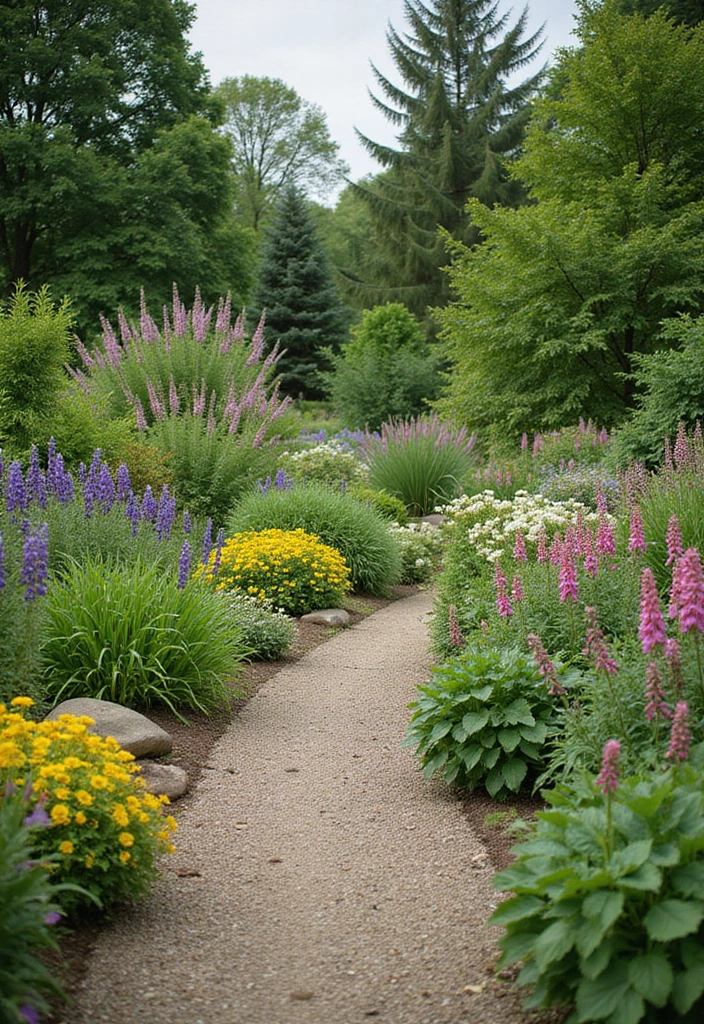
Indulge your sense of smell by creating an aromatic garden filled with fragrant herbs and flowers. Incorporate plants like lavender, rosemary, and jasmine, which can fill your space with delightful scents.
Position these plants near pathways or seating areas where their fragrances can be enjoyed fully. Consider adding a small herb patch for culinary uses, bringing a fresh aroma from the kitchen to your outdoor space.
– Benefits: Enhances sensory experiences and can promote relaxation.
– Suggestions: Integrate plants that bloom at different times for year-round fragrance.
– Tricks: Use pots to easily move aromatic plants into the sun or shade as needed.
This enchanting garden will provide a soothing and inviting atmosphere where nature’s aromas come alive.
24. Rustic Garden Design
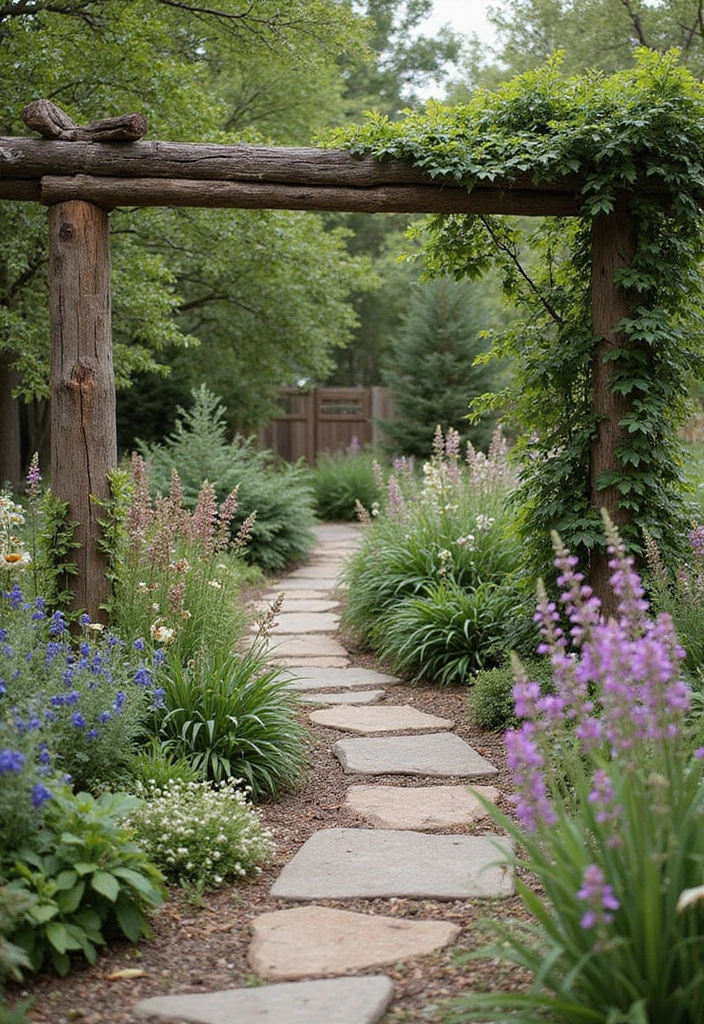
Bring a charming rustic feel to your large garden by incorporating natural elements like wood, stone, and metal. Use reclaimed materials for raised beds, trellises, and garden furniture, giving your space character and warmth.
Integrate wildflowers and native plants that harmonize with the natural landscape. Use pathways of gravel or stepping stones to complete the rustic look while providing practical navigation.
– Benefits: Creates a warm and welcoming atmosphere.
– Suggestions: Introduce rustic decor like old tools or repurposed items as garden art.
– Tricks: Use a mix of heights in planting for visual appeal.
This style will turn your garden into a cozy haven that celebrates nature’s beauty.
25. Mindful Gardening Spaces
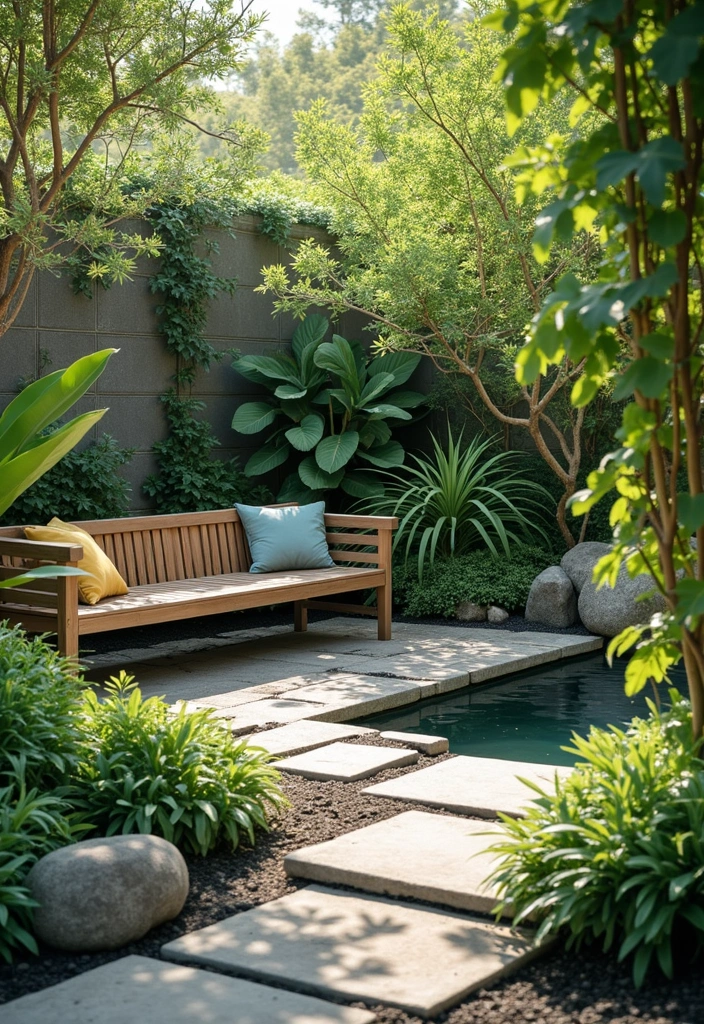
Create spaces designed for mindfulness and meditation through gardening. Arrange your garden to include quiet corners with comfortable seating, surrounded by calming plants and soothing sounds.
Incorporate sensory elements like textured foliage, fragrant flowers, and gentle water features that facilitate relaxation. You could also include a small area for growing herbs or vegetables, promoting the connection between gardening and mindful eating.
– Benefits: Encourages relaxation and mental well-being.
– Suggestions: Use natural materials for seating to blend with nature.
– Tricks: Design your garden for seasonal changes for ongoing enjoyment.
This mindful garden will invite you to slow down and appreciate the beauty of your surroundings.
26. Seasonal Gardens
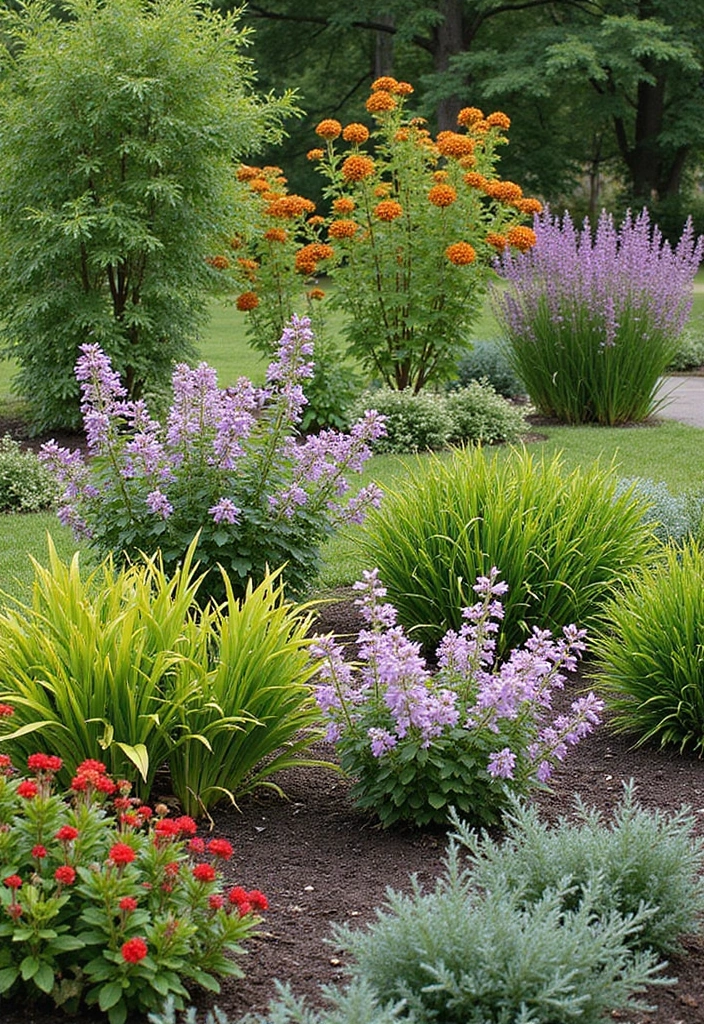
Design your garden to emphasize seasonal beauty by choosing plants that flourish throughout the year. Plant spring bulbs, summer blooms, autumn foliage, and winter evergreens to create a garden that changes with the seasons.
Incorporate dynamic elements like a seasonal vegetable patch that allows for crop rotation and varied harvests. Seasonal decorations can also enhance your garden’s appeal, with festive decor during holidays.
– Benefits: Year-round interest and vibrant changes.
– Suggestions: Research plants that provide interest in various seasons.
– Tricks: Use planters for seasonal displays to easily change decor.
This approach will ensure your garden is a living tapestry that evolves beautifully through the year.
27. Color Theory in Gardens
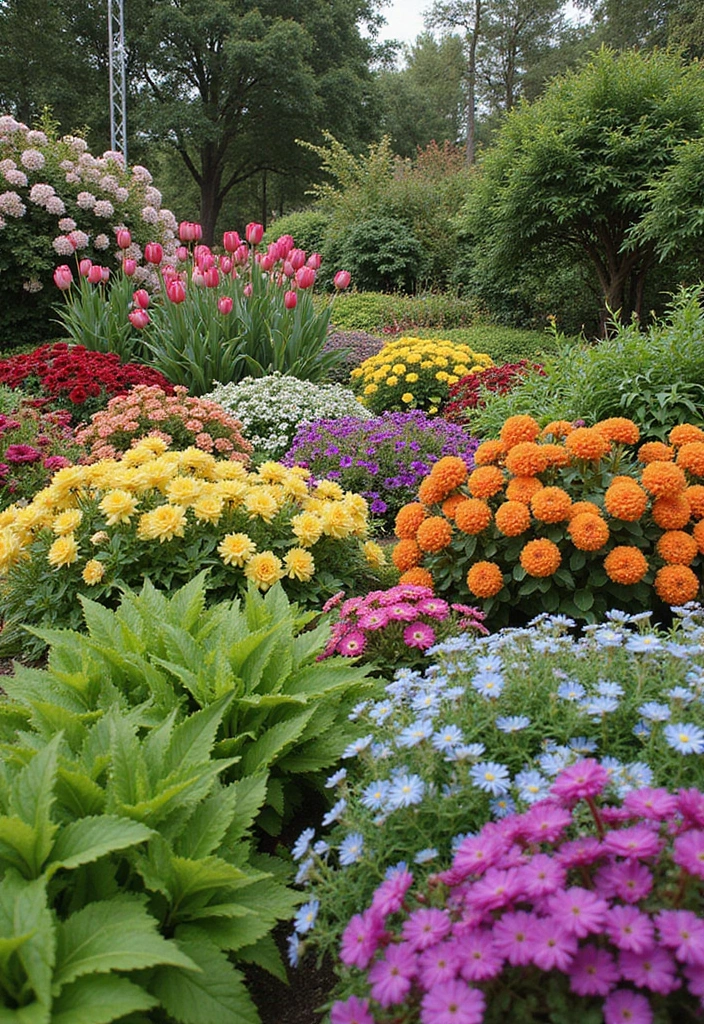
Harness the power of color theory to create a visually stunning garden. Use a color wheel to guide your plant selection, choosing complementary colors that evoke emotions. For instance, warm colors like reds and yellows create energy, while cool colors like blues and purples promote calm.
Incorporate elements like colorful garden art or bright furnishings that harmonize with your plant palette. Pay attention to seasonal color changes to keep the garden vibrant year-round.
– Benefits: A visually appealing garden that conveys mood and emotion.
– Suggestions: Use color to guide visitors through the space.
– Tricks: Plan for blooms at different times for continuous color.
This thoughtful design will create an engaging outdoor space that enchants all who visit.
28. Garden Zones for Different Activities
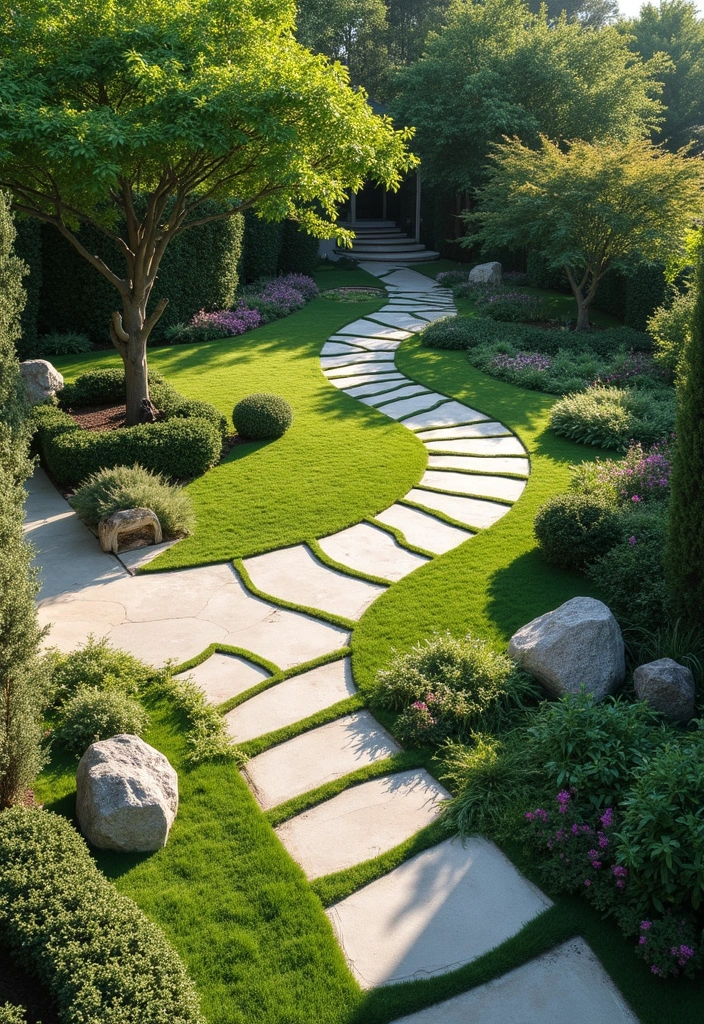
Design your large garden by creating distinct zones for various activities. Consider areas for relaxing, playing, cooking, and gardening, each tailored to its purpose. This zoning helps organize the space and enhances functionality.
You can incorporate features like seating areas, play zones for children, and designated spots for outdoor cooking. Use plantings to define these areas naturally, creating a seamless flow throughout the garden.
– Benefits: Maximizes space usability and promotes outdoor enjoyment.
– Suggestions: Ensure pathways connect the zones for easy access.
– Tricks: Use taller plants to create privacy between areas.
This structured design will encourage diverse activities while maintaining a beautiful and cohesive garden.
29. Farm-to-Table Garden
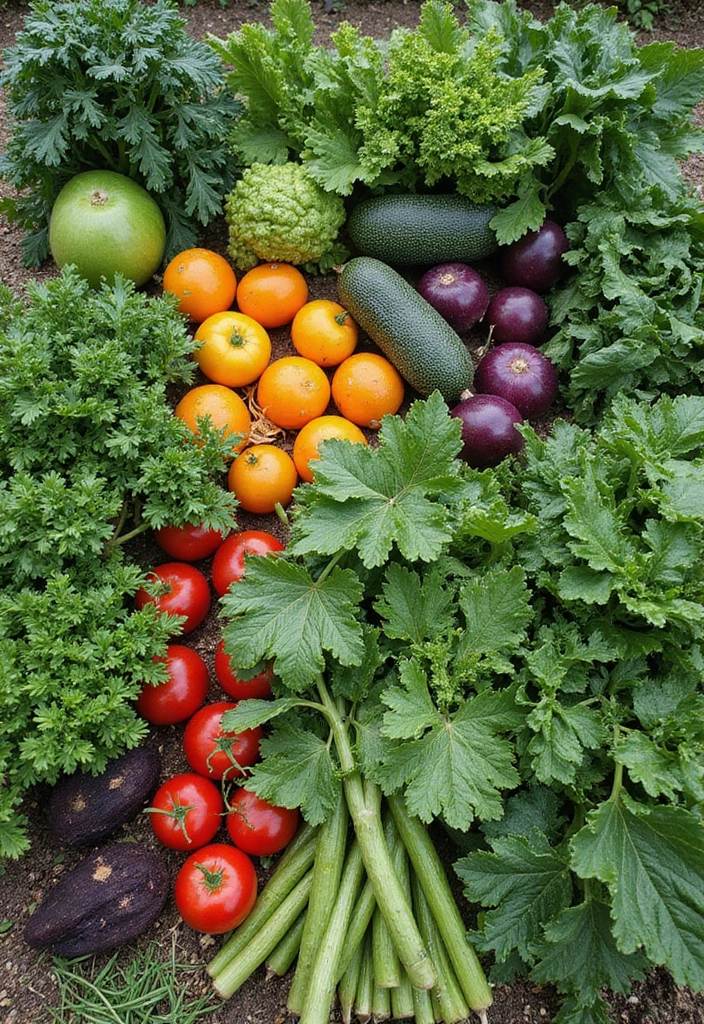
Cultivate a farm-to-table experience by planting a diverse array of vegetables, fruits, and herbs right in your backyard. Not only does this create a direct food source, but it also allows for fresh, organic meals that celebrate the seasons.
Consider integrating a compost area for waste management, enhancing soil health and sustainability. Create a layout that facilitates easy harvesting and food preparation, possibly even including a small outdoor kitchen.
– Benefits: Encourages healthy eating and reduces carbon footprint.
– Suggestions: Plan your layout for efficient space use.
– Tricks: Rotate your crops to maintain soil quality.
This sustainable approach will help you appreciate the cycle of food production while enjoying delicious meals right from your garden.
30. Personal Touches
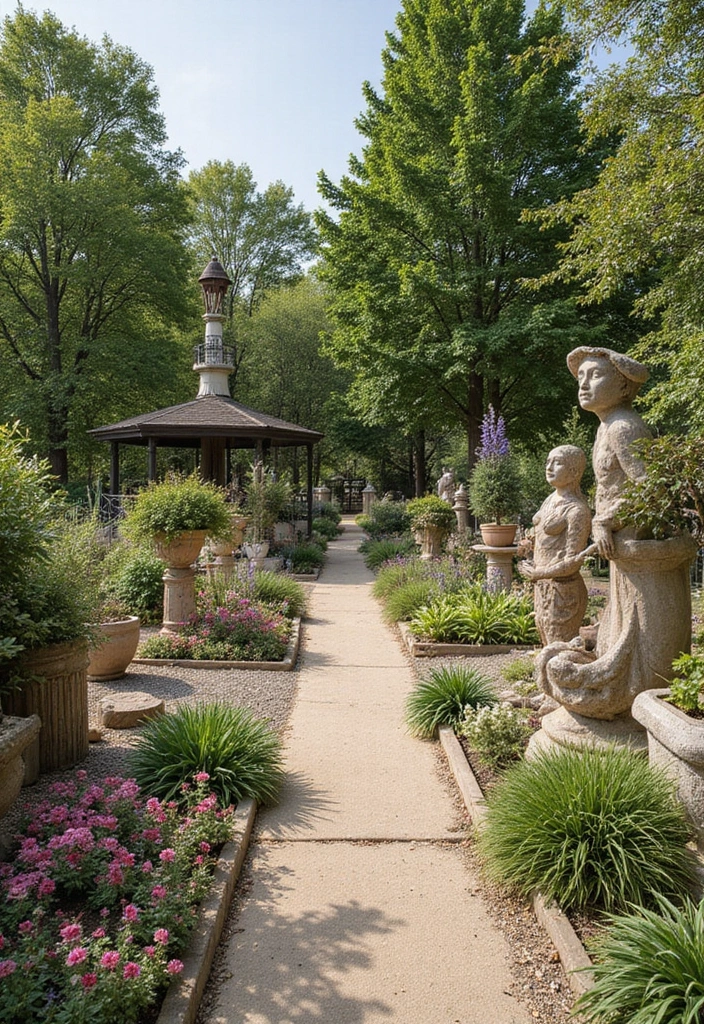
Infuse your garden with personal touches that reflect your style and interests. This could include unique garden art, personalized plant markers, or even a themed area that resonates with a passion of yours.
Consider how your garden can tell a story about you. For example, setting up a small library or a photo corner for capturing memories can add a personal flair. Integrate items from your travels or family heirlooms that resonate with your gardening journey.
– Benefits: Creates a meaningful and memorable space.
– Suggestions: Choose items that resonate with your life and interests.
– Tricks: Mix old and new for a curated yet cohesive look.
These personal elements will turn your garden into a true reflection of you, making it a special place for relaxation and inspiration.
Conclusion
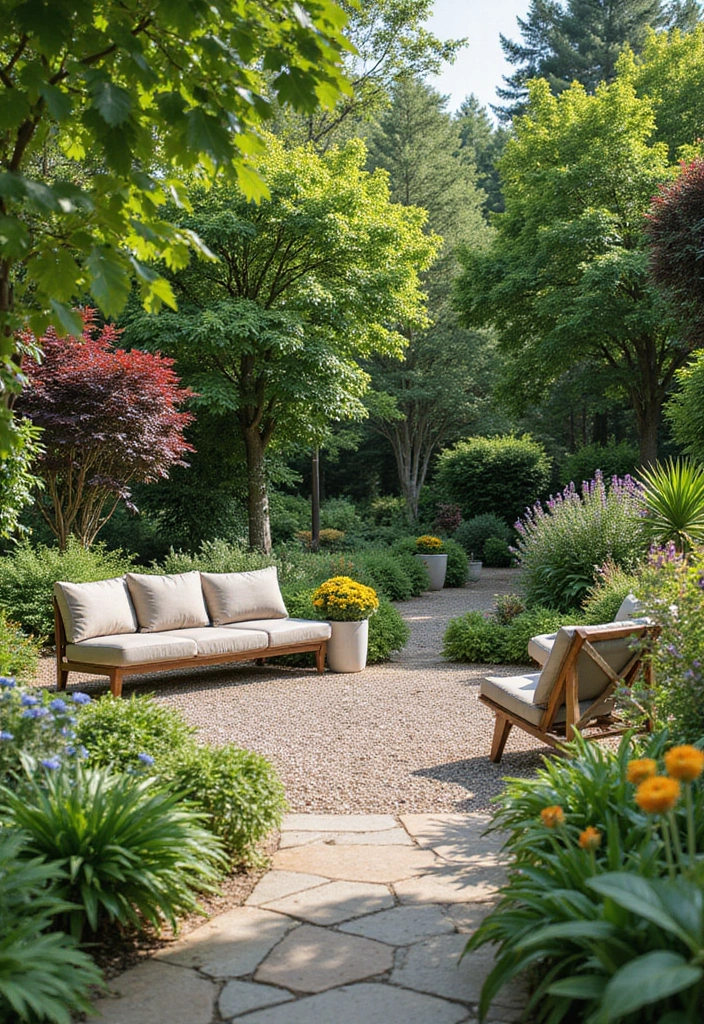
Creating a paradise in your large garden is a rewarding endeavor that combines creativity, sustainability, and connection with nature. Each of these ideas offers unique ways to enjoy and enhance your outdoor space while promoting eco-friendly practices.
Whether you choose to grow a vibrant vegetable patch, design cozy nooks, or attract local wildlife, remember that your garden is a reflection of your values and passions. Embrace these ideas, and let your garden flourish into a beautiful sanctuary for you, your family, and the environment.
Frequently Asked Questions
What are some eco-friendly options for landscaping a large garden?
Embracing sustainability in your large garden can be both rewarding and beautiful! Consider creating an eco-friendly vegetable garden using heirloom seeds and organic soil. Native plant landscaping is another fantastic option, as these plants thrive in your local climate and require less maintenance. Additionally, think about incorporating water features powered by solar energy to enhance the serenity of your space while being kind to the environment.
How can I design outdoor living spaces in my large garden?
Designing outdoor living spaces can transform your large garden into a haven for relaxation and entertainment. Start with an outdoor kitchen and dining area using sustainable materials like reclaimed wood. Don’t forget cozy nooks with comfortable seating, perfect for reading or meditating. You can also create a fire pit area for gatherings, ensuring you’re using eco-friendly materials for construction to maintain a sustainable approach.
What plants should I consider for a wildlife-friendly garden?
Creating a wildlife-friendly garden is a wonderful way to support local ecosystems. Focus on planting native species that provide food and shelter for local wildlife. Incorporate elements like birdhouses, butterfly gardens, and insect hotels to attract beneficial creatures. A small pond can also serve as a water source, making your garden a haven for biodiversity while enhancing your outdoor aesthetic.
What are some creative ideas for garden zones based on activities?
Designing distinct zones in your large garden can enhance your outdoor experience! Consider creating a meditation garden for relaxation, a playful area for outdoor games, and a section dedicated to growing your own food with a farm-to-table garden. Each zone can have its own unique look and feel while serving a specific purpose, making your garden both functional and aesthetically pleasing.
How can I incorporate color theory into my garden design?
Harnessing color theory in your garden can create visually stunning landscapes. Use a color wheel to choose plants that complement each other and evoke desired emotions. For instance, warm colors like reds and yellows can energize a space, while cool colors like blues and greens provide tranquility. By thoughtfully selecting plant combinations, you can design a garden that not only looks beautiful but also feels harmonious and inviting.
